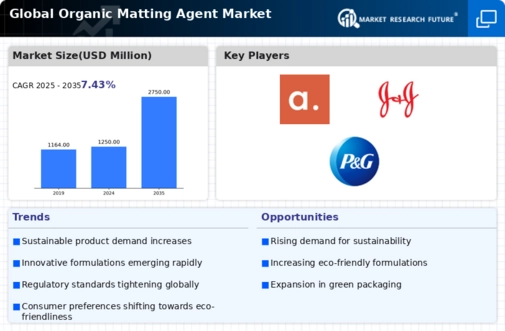Market Trends
Key Emerging Trends in the Organic Matting Agent Market
Organic Matting Agent's broad use in coatings, inks, and plastics is driving major industry developments. Demand for eco-friendly and sustainable organic matting agents is rising. Manufacturers are switching to renewable organic matting agents as environmental awareness rises. Environmentally minded customers and industries choose these agents, frequently made of natural waxes or biodegradable materials, because they support global sustainability.
Organic matting agents are also rising in the coatings sector. These ingredients help coatings stay clear and matte while resisting scratches. Demand for organic matting agents is rising as consumers desire matte finishes in furniture, automobile coatings, and electronics. These agents' positive coatings market trends are due to their ability to improve aesthetics without compromising performance.
To improve plastic product surface qualities, organic matting agents are being used more in the plastics sector. Organic matting agents help achieve surface textures and appearances in packaging, consumer goods, and automobile components. These additives are valuable in the plastics market due to their versatility and resin compatibility.
Technological advances affect the global organic matting agent market. Current research focuses on boosting matting agent efficiency, discovering new organic sources, and improving performance. Manufacturing innovations in organic matting agents make them effective in many applications, expanding market prospects.
Demand for organic matting agents varies regionally. Emerging economies with increased production and consumer awareness are using these agents more. Market players are positioning themselves in these locations to capitalize on growing prospects and meet local industry needs.
Organic matting agent market trends are also influenced by regulation. Manufacturers and consumers prioritize environmental compliance. The endeavor to reduce VOC emissions in coatings and plastics focuses organic and eco-friendly matting agents.
The tendency toward high performance coatings and inks also affects organic matting agent sales. Organic matting agents help companies create goods with better durability, scratch resistance, and visibility. The organic matting agent industry is growing due to consumer goods and automobile coatings' premium finishes.






Leave a Comment